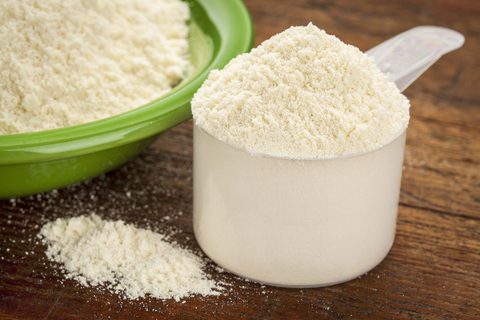

Five Ways Enzymes can Improve your Whey Protein Hydrolysate
Whey protein is a valuable ingredient adding many health benefits to the various products it is incorporated into. Enzymes are a simple yet effective way of improving existing whey products to keep up with current food trends.
Whey protein is a valuable ingredient adding many health benefits to the various products it is incorporated into, such as sports nutritional products, infant formulas, high protein nutritional bars and much more. As high protein products are high in demand by consumers, it is important for manufacturers to find ways of improving existing products or introducing new products to keep up with current trends. A simple yet very effective way to do this is by the addition of enzymes.
Here are 5 ways enzymes can improve whey protein hydrolysates:
FLAVOUR – Whey protein very often has an awful taste or texture, so manufacturers strive to achieve a bland taste. Enzymes can be used to create a bland, non-bitter flavour profile which reduced the need for additional masking agents.
TEXTURE – It is important that texture is compatible to customer requirements. Sometimes this can be an issue, for example, high protein nutritional bars are available with up to 50% protein which can be difficult for formulators to achieve without compromising on taste and texture. By using enzymes it is possible to maintain a soft texture as well as improving the taste and shelf life.
LOW ALLERGENICITY – The main allergen in cow’s milk protein is beta-lactoglobulin. Beta-lactoglobulin is the most abundant protein in whey accounting for 50% of the total protein. Although the incidence of allergies to cow’s milk protein are low, many infant formula manufacturers are increasingly adding whey proteins to infant formula which could potentially increase problems such as severe life threatening allergies that need to be overcome. This can be done by enzymatic hydrolysis of the protein beta-lactoglobulin. This means that the whey proteins that are added to infant formula to improve factors such as taste and smell should be extensively hydrolysed in order to reduce allergenicity.
ABUNDANT SOURCE OF BCAAS – Whey contains high levels of branched chain amino acids (BCAAs); isoleucine, leucine and valine which play an important role in muscle metabolism. These amino acids are required for stimulating a high rate of protein synthesis in muscle and help protect against muscle breakdown during heavy exercise. In comparison to other dietary sources of protein, whey proteins are the richest known source of naturally occurring BCAAs containing up to 26% BCAAs. In addition, whey is a good source of the amino acid cysteine, which is essential to the preservation of muscle, particularly during exercise. The use of enzymes can create a whey protein hydrolysis with high digestibility and an abundant source of BCAAs
SOLUBILITY – This is particularly important for beverage applications to ensure functional properties such as gelling, foaming and emulsification are maintained. However, solubility is also important from a consumer’s perspective to improve product texture and ensure pre-mixes are dissolved in liquids. Enzymatic hydrolysis can create whey protein hydrolysates with excellent dispersibility and solubility.